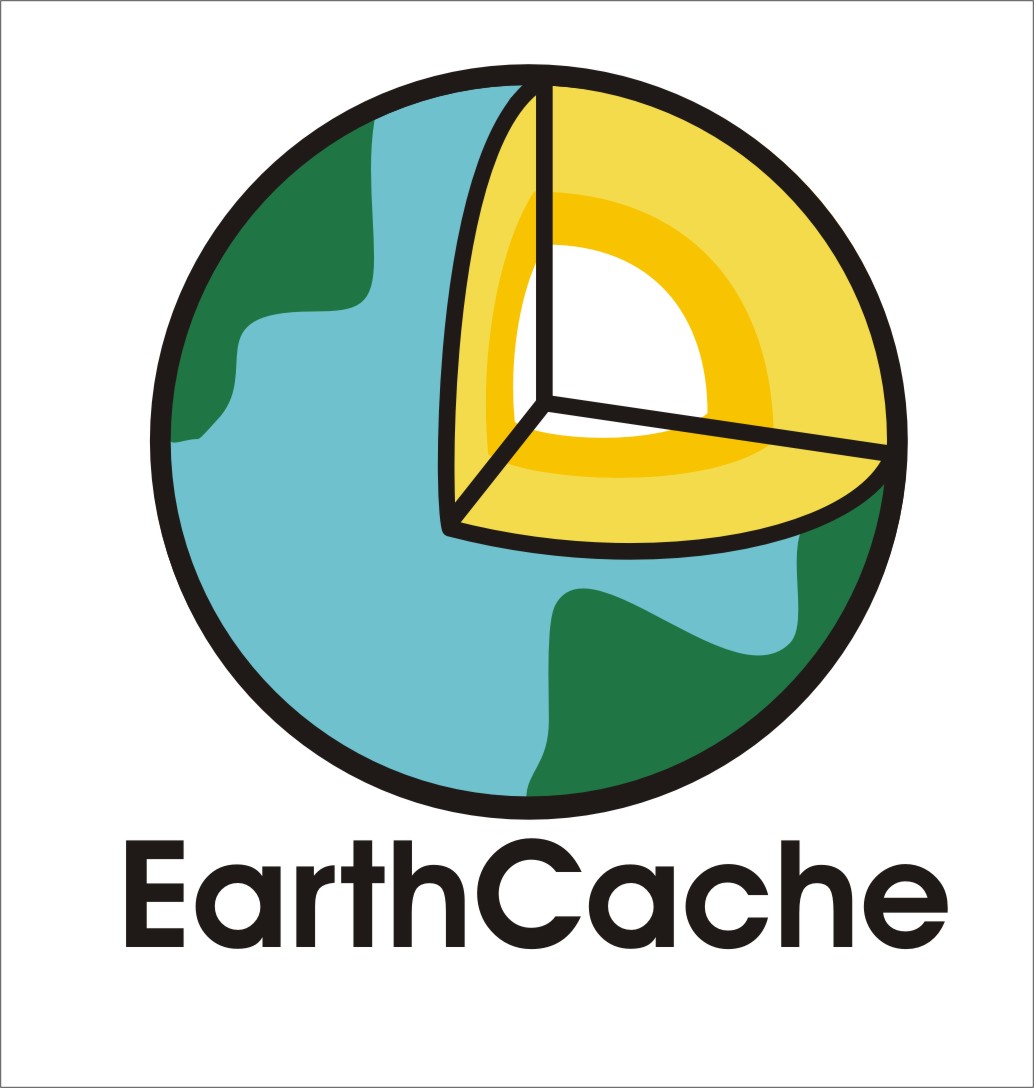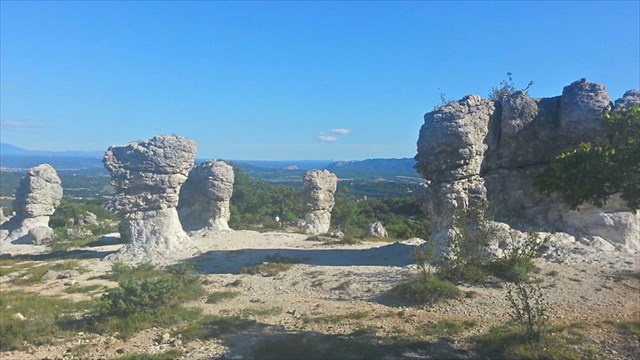Les Mourres EarthCache
-
Difficulty:
-

-
Terrain:
-

Size:  (other)
(other)
Please note Use of geocaching.com services is subject to the terms and conditions
in our disclaimer.

|
Les Mourres
|

|
 Entre Forcalquier et Fontienne, dans les Alpes de Haute-Provence, on peut observer un ensemble de rochers aux formes étranges : c’est le site des « Mourres »
Entre Forcalquier et Fontienne, dans les Alpes de Haute-Provence, on peut observer un ensemble de rochers aux formes étranges : c’est le site des « Mourres »
Le site des Mourres est unique au monde.
Il y a plusieurs millions d’années,la région du Luberon est parsemée de grands lacs.
C’est au bord de l’un de ces lacs que se forment les rochers des Mourres : un lac marécageux, peu profond, aux eaux calmes, où pousse une abondante végétation aquatique.
Les rochers des Mourres se seraient formés, en milieu marécageux, à partir de massifs d’herbiers aquatiques se développant à la surface de l’eau. L’édification d’un rocher vient du fait que son herbier constructeur accumulait du calcaire en le capturant et le stabilisant dans son « feuillage », l’induration du rocher en voie de construction étant aussi vraisemblablement favorisée par la précipitation du calcaire suite à l’activité photosynthétique des herbes. Lors de l’élévation du niveau d’eau du lac, les herbiers se développaient vers le haut, provoquant la croissance verticale du rocher qui s’indurait progressivement en partie basse, les herbiers étant à la poursuite de la surface et à la recherche de la lumière.
Les différentes formes des rochers proviennent des différents régimes de développement des « herbiers - parents », la nécrose de leur partie centrale provoquant une croissance périphérique et la formation d’une vasque, par exemple.
Autour des « rochers » en gestation s’accumulaient sensiblement les mêmes sédiments, mais non indurés par les herbiers, ce qui explique qu’ils sont aujourd’hui plus facilement décapés et rapidement évacués par l’érosion, nous laissant ce décor étonnant et très local des rochers des Mourres.
Ce que vous devez faire :
1 - PHOTO Vous pouvez vous prendre vous ou votre G.P.S. en photo devant le site (optionnel).
2 - QUESTIONS Pour se conformer aux nouvelles directives éducatives pour les Earthcaches vous devez répondre aux questions suivantes en faisant quelques recherche.Toutes les réponses sont sur le panneau d'information (R1etR2) M’envoyer un email (courriel) avec les résultats. Attendez mon accord pour faire un "found it" sur la earthcache. Merci
A . Quel est age de ce site (en Millions d'années) ?
B . De quoi sont composés ces rochers ?
C. Quel est environ la hauteur des ces Mourres?
D. Citez deux formes de rocher?
D. En R1 et R2 quel est l'altitude relevée sur le panneau ?

|
Les Mourres
|

|
 Between Forcalquier and Fontienne, in the Alpes de Haute-Provence , we can observe a set of rocks to the strange forms: this is the site of the " Mourres "
Between Forcalquier and Fontienne, in the Alpes de Haute-Provence , we can observe a set of rocks to the strange forms: this is the site of the " Mourres "
The site of Mourres is unique in the world. There are several millions of years,the region of Luberon is dotted with great lakes.
It is at the edge of one of these lakes that are formed the rocks of the Mourres: a swampy lake, shallow, calm waters, or pushed a abundant aquatic vegetation.
The rocks of the Mourres se would be trained, in marsh environment, from massive seagrass aquatic develops at the surface of the water.
The building of a rock comes from the fact that its herbarium manufacturer piling up of limestone in the capturing and the stabilizing in its "foliage", the induration of the rock in track construction is also likely favored by the precipitation of limestone suite to the photosynthetic activity of herbs. When the elevation of the water level in the lake, the seagrass beds were developing toward the top, causing the vertical growth of the rock which is indurait gradually in the lower part, the seagrass beds being to the continuation of the surface and to the search for the light.
The different forms of rocks come from the different regimes of development of " seagrass beds - parents ", the necrosis of their central part causing a growth device and the formation of a cauldron, for example.
Around the "rocks" in gestation were accumulating substantially the same sediments, but not indures by seagrass beds, which explains that they are today more easily pickled and quickly evacuated by the erosion, leaving us this stunning decor and very local rocks of Mourres.
What you have to do :
1 - PICTURE You may take a picture of yourself (ves)or your G.P.S. in front the beach (Optional).
2 - QUESTIONS To conform with the new educational guidelines for Earthcaches you must answer to of the following questions making some easy researches while going at the R1 point (All the answers are on this panel of information) and email me the results (in english). Wait for my agreement to make a "found it" on earthcache. Thanks
A . What is age of this site (in millions of years) ?
B . De quoi sont composés ces rochers ?
C. What are compounds these rocks?
D. Name two forms of rock?
D. In R1 and R2 What is the altitude reading on the panel?
Additional Hints
(Decrypt)
Enccryrm-ibhf dhr p'rfg har rnegupnpur, qbap vy a’l n av obîgr av ybtobbx !Erzrzore gung guvf vf na Rnegupnpur: Gurer vf ab obk naq ab ybtobbx !